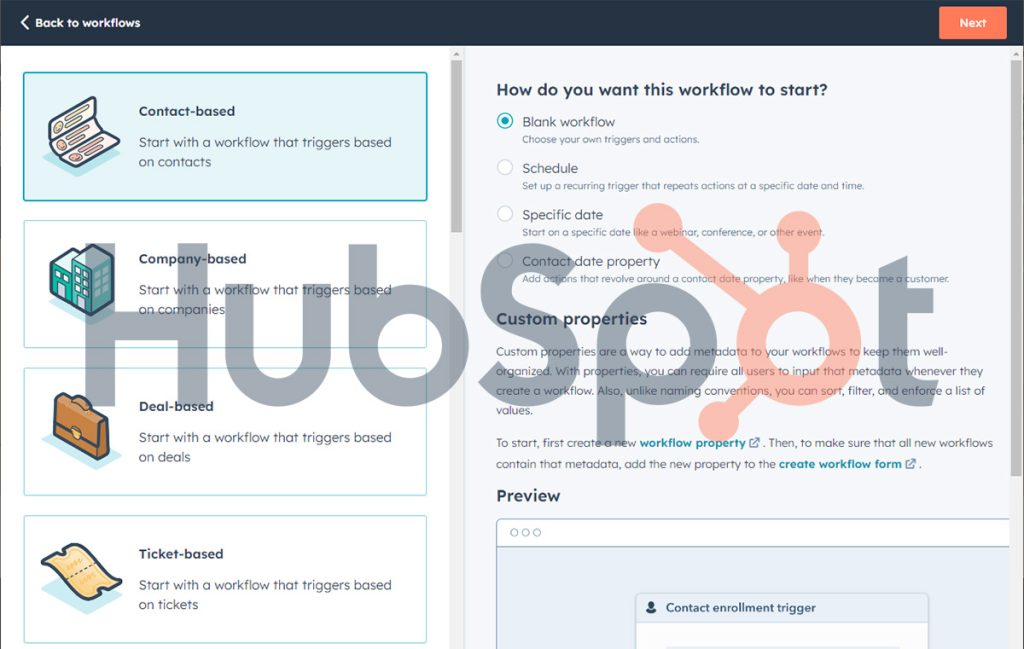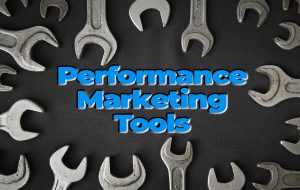Marketing Automation with HubSpot: A Comprehensive Guide

Marketing automation has revolutionized the way businesses engage with their audience, streamlining processes and maximizing efficiency. Utilizing a powerful platform like HubSpot can take your marketing strategies to the next level, driving growth and enhancing customer relationships. Are you ready to unlock the full potential of marketing automation through HubSpot?
By implementing HubSpot’s robust features, businesses can automate repetitive tasks, personalize customer interactions, and analyze data to make informed decisions. This comprehensive tool offers a suite of functionalities designed to simplify marketing efforts and improve overall performance. Whether you’re a seasoned marketer looking to optimize your campaigns or a small business owner seeking to scale your operations, HubSpot’s marketing automation solutions can cater to your specific needs.
In this blog post, we’ll look into the world of marketing automation using HubSpot, exploring its key benefits, features, and best practices. From lead nurturing and email marketing to analytics and reporting, we’ll cover everything you need to know to leverage HubSpot effectively in your marketing strategy. Check out how HubSpot can transform your marketing efforts and drive tangible results for your business.
Understanding Marketing Automation
Marketing automation is a powerful tool that streamlines and automates marketing activities to increase efficiency and achieve better results. It involves using software platforms like HubSpot to automate repetitive tasks such as sending emails, managing social media, and tracking customer interactions.
Definition of Marketing Automation
Marketing automation refers to the use of software and technology to automate marketing tasks, processes, and campaigns. It allows businesses to target specific audiences with personalized content at the right time, nurturing leads and guiding them through the sales funnel. By automating repetitive tasks, marketers can focus on strategy and creative aspects to drive better results.
Benefits of Marketing Automation
Implementing marketing automation can lead to significant benefits for businesses of all sizes. Here are some key advantages:
- Improved Lead Generation: Marketing automation helps in capturing and nurturing leads effectively. According to recent studies, businesses that use automation for lead management see a 10% or more increase in revenue in six to nine months.
- Increased Conversions: By delivering the right message to the right person at the right time, automation increases the likelihood of conversions. Research shows that companies using marketing automation to nurture leads experience a 451% increase in qualified leads.
- Enhanced Customer Retention: Automation allows for personalized and timely communication with customers, leading to improved customer satisfaction and loyalty. Studies reveal that businesses that implement automation for customer retention witness a 25% increase in customer retention rates.
By harnessing the power of marketing automation, businesses can streamline processes, drive engagement, and ultimately boost revenue and growth.
Overview of HubSpot
HubSpot is a powerful inbound marketing and sales platform that offers a comprehensive set of tools to help businesses attract, engage, and delight customers. Let’s explore the key aspects of HubSpot that make it a go-to choice for many marketers and sales professionals.
Introduction to HubSpot
HubSpot is a leading customer relationship management (CRM) software that integrates various marketing tools like email marketing, social media management, content management, and analytics in one platform. It helps businesses streamline their marketing efforts and effectively manage their leads and customers throughout the entire sales process.
Key Features of HubSpot
- Lead Management: HubSpot’s lead management tools allow users to capture, track, and nurture leads effectively. With features like lead scoring and automated lead nurturing, businesses can prioritize their leads and convert them into customers efficiently.
- Email Marketing: HubSpot offers robust email marketing capabilities, allowing users to create and send personalized emails, automate email campaigns, and track email performance. The platform’s email analytics provide valuable insights to optimize email marketing strategies.
- Analytics: HubSpot provides comprehensive analytics and reporting tools to track the performance of marketing campaigns, website traffic, and customer interactions. Users can gain valuable insights into their marketing efforts and make data-driven decisions to improve their strategies.
Setting Up HubSpot Account
Setting up a HubSpot account is a straightforward process. Users can sign up for a free account or a paid subscription based on their business needs. Once signed up, they can customize their account settings, import contacts, set up integrations with other tools, and start utilizing HubSpot’s features to drive their marketing and sales efforts.
Explore how HubSpot can revolutionize your marketing efforts and propel your business to new heights. HubSpot’s user-friendly interface and powerful features make it a game-changer in the world of marketing automation.
Implementing Marketing Automation with HubSpot
Marketing automation is a powerful tool that can streamline your marketing efforts and drive better results. Implementing marketing automation with HubSpot can take your marketing strategy to the next level. Let’s dive into how you can effectively implement marketing automation using HubSpot.
Setting Up Your HubSpot Account
The first step in implementing marketing automation with HubSpot is setting up your account. Start by creating an account on the HubSpot platform and familiarize yourself with the features it offers. Customize your settings to align with your marketing goals and objectives.
Defining Your Marketing Automation Goals
Before diving into automation workflows, it’s crucial to define your marketing automation goals. Determine what you aim to achieve with marketing automation, whether it’s lead nurturing, lead scoring, or improving customer engagement. Having clear goals will guide your automation strategy.
Building Automation Workflows
HubSpot provides a user-friendly interface for building automation workflows. Create workflows that cater to different stages of the customer journey, from lead capture to conversion. Utilize HubSpot’s automation features to personalize communication, trigger responses based on user behavior, and streamline lead management processes.
Integrating Your CRM with HubSpot
For seamless marketing automation, integrate your customer relationship management (CRM) system with HubSpot. Syncing data between the two platforms ensures a unified view of your leads and customers. Leverage integrated data to create targeted campaigns and personalized experiences for your audience.
Measuring and Optimizing Performance
Track the performance of your marketing automation efforts using HubSpot’s analytics tools. Monitor key metrics such as email open rates, click-through rates, conversion rates, and engagement levels. Use data-driven insights to optimize your automation workflows and continually improve your marketing strategy.
Leveraging HubSpot’s Training and Support Resources
HubSpot offers a wealth of training resources and support to help you make the most of your marketing automation efforts. Take advantage of HubSpot Academy courses, webinars, and community forums to enhance your skills and stay updated on the latest marketing trends and best practices.
Implementing marketing automation with HubSpot can revolutionize the way you engage with your audience and drive business growth. By following these steps and leveraging HubSpot’s robust features, you can create a tailored automation strategy that delivers impactful results for your marketing campaigns.
Creating Automated Workflows in Hubspot
Marketing automation through HubSpot allows businesses to create efficient automated workflows that help in lead nurturing and email campaigns. Let’s dive into how you can set up automated workflows in HubSpot to streamline your marketing efforts.
Setting Up Automated Workflows
To get started with creating automated workflows in HubSpot, navigate to the ‘Automation’ tab in your HubSpot account. Click on ‘Workflows’ and then ‘Create workflow’ to begin setting up your automated process.
Defining Triggers and Actions
Within the workflow builder, you can define triggers that will initiate the workflow based on specific conditions. These triggers could include actions taken by leads on your website, such as filling out a form or visiting a particular page. Once the trigger is activated, you can specify the actions that HubSpot should take, such as sending a follow-up email or assigning a lead to a specific sales rep.
Segmenting Your Audience
Segmentation is key to successful automated workflows. HubSpot allows you to segment your audience based on various criteria like demographics, behavior, or interactions with your content. By creating specific segments, you can personalize the automated messages that are sent out to different groups of leads.
Lead Nurturing Campaigns
One of the most powerful uses of automated workflows is in lead nurturing campaigns. You can set up a series of emails that are automatically sent to leads based on their interactions with your website or previous emails. This helps in guiding leads through the sales funnel and keeps them engaged with your brand.
Testing and Optimization
Once you have set up your automated workflows, it’s essential to monitor their performance regularly. HubSpot provides analytics that allow you to track the effectiveness of your workflows and make adjustments as needed to improve their performance over time. Continuously testing and optimizing your workflows will ensure that you are getting the most out of your automated marketing efforts.
Conclusion
Automated workflows in HubSpot can revolutionize your marketing strategies by streamlining processes, personalizing communication, and nurturing leads effectively. By following these steps and utilizing the features offered by HubSpot, you can create impactful automated workflows that drive results for your business.
Utilizing Personalization in HubSpot
Personalization is a key element in marketing automation, allowing businesses to create targeted and tailored experiences for their customers. HubSpot excels in enabling personalization through its robust features and tools that help marketers deliver the right message to the right audience at the right time.
Customer Segmentation
HubSpot’s customer segmentation capabilities allow users to divide their audience into specific groups based on criteria such as behavior, demographics, or interactions with the brand. By segmenting customers, marketers can personalize their marketing efforts to cater to the unique needs and preferences of each group.
Dynamic Content
One of the standout features of HubSpot is its dynamic content tool, which enables marketers to display different content to different segments of their audience based on predefined rules. This level of personalization ensures that each visitor receives a tailored experience that is relevant to their interests and needs.
Email Personalization
With HubSpot’s email personalization tools, marketers can go beyond simply addressing recipients by their first names. The platform allows for dynamic insertion of personalized content, such as recommended products, relevant blog posts, or targeted offers, making each email communication more engaging and impactful.
Behavioral Triggers
HubSpot’s automation capabilities extend to behavioral triggers, enabling marketers to set up automated responses based on specific actions or interactions taken by customers. This allows for real-time personalization, delivering timely and relevant content or offers based on individual behaviors.
Reporting and Optimization
Incorporating personalization in marketing efforts is not just about enhancing the customer experience but also about driving results. HubSpot’s robust reporting and optimization features enable marketers to track the performance of personalized campaigns, identify areas for improvement, and continuously refine their strategies for maximum impact.
Conclusion
Utilizing personalization in HubSpot elevates marketing automation to a whole new level, empowering businesses to create meaningful connections with their audience, drive engagement, and ultimately, achieve their marketing goals. By harnessing the power of personalization within the HubSpot platform, marketers can deliver targeted, relevant, and effective campaigns that resonate with customers on a personal level.
Measuring Success with HubSpot
In today’s data-driven marketing world, measuring success is key to refining strategies for optimal performance. HubSpot provides a robust set of tools to track and analyze key metrics essential for gauging the effectiveness of your marketing efforts.
Tracking Key Metrics
- Conversion Rates: Monitoring conversion rates is crucial to understanding how effectively your marketing campaigns are converting leads into customers. It helps in identifying areas that need improvement and those that are performing well.
- Click-Through Rates: Tracking click-through rates enables you to evaluate the performance of your email campaigns, ads, and other marketing initiatives. It provides insights into audience engagement and interest levels.
- ROI (Return on Investment): Calculating ROI allows you to measure the profitability of your marketing campaigns. By analyzing the revenue generated compared to the investment made, you can determine the success and efficiency of your marketing endeavors.
Analyzing Reports in HubSpot
HubSpot’s reporting capabilities offer a comprehensive view of your marketing activities, providing valuable insights to fine-tune your strategies for better results. The platform’s intuitive dashboards and customizable reports make it easy to track performance metrics and identify trends.
With HubSpot, you can analyze data on website traffic, email marketing performance, lead generation, and more. By leveraging these reports, marketers can make informed decisions, optimize their campaigns, and drive continuous improvement in their marketing efforts.
Integration with Other Tools
Integrating HubSpot with a variety of tools and platforms can be a game-changer for businesses looking to streamline their marketing efforts. Let’s explore two key areas where this integration can make a significant impact:
Integrating HubSpot with CRM Systems
One of the most pivotal integrations for businesses is connecting HubSpot with Customer Relationship Management (CRM) systems like Salesforce. By integrating these two powerful tools, companies can achieve a seamless flow of data between marketing and sales departments. This integration allows for a more robust understanding of customer interactions, personalized communication, and targeted marketing campaigns. With HubSpot and CRM systems working in tandem, businesses can unlock efficiencies in lead management, customer tracking, and sales automation, leading to improved overall performance and revenue growth.
Connecting HubSpot with Social Media Platforms
In today’s evolving digital world, social media platforms play a crucial role in reaching and engaging with target audiences. Integrating HubSpot with social media platforms like Facebook, Twitter, and LinkedIn empowers businesses to create more targeted and impactful marketing campaigns. By leveraging the power of social media data within HubSpot, companies can personalize their messaging, track customer interactions across channels, and measure campaign performance effectively. This integration not only streamlines the marketing process but also enables businesses to engage with their audience in a proactive and meaningful way, driving brand awareness and customer loyalty.
When businesses embark on the quest of integrating HubSpot with other tools like CRM systems and social media platforms, they open up a world of possibilities for enhancing their marketing strategies. By leveraging these integrations, companies can create a more connected and efficient marketing ecosystem that drives results and fosters growth. So, why wait? Take the first step towards a more optimized marketing approach by exploring the integration options HubSpot offers and unlock the full potential of your marketing efforts.
Takeaways
Leveraging HubSpot for marketing automation can truly revolutionize your digital marketing efforts. With its intuitive platform and robust features, you can streamline your campaigns, nurture leads effectively, and drive meaningful results for your business. By automating repetitive tasks and personalizing the customer journey, you can build stronger relationships and boost conversions effortlessly. HubSpot’s data-driven approach empowers you to make informed decisions and optimize your strategies for maximum impact. Embrace the power of marketing automation with HubSpot, and watch your business soar to new heights in the digital realm.










